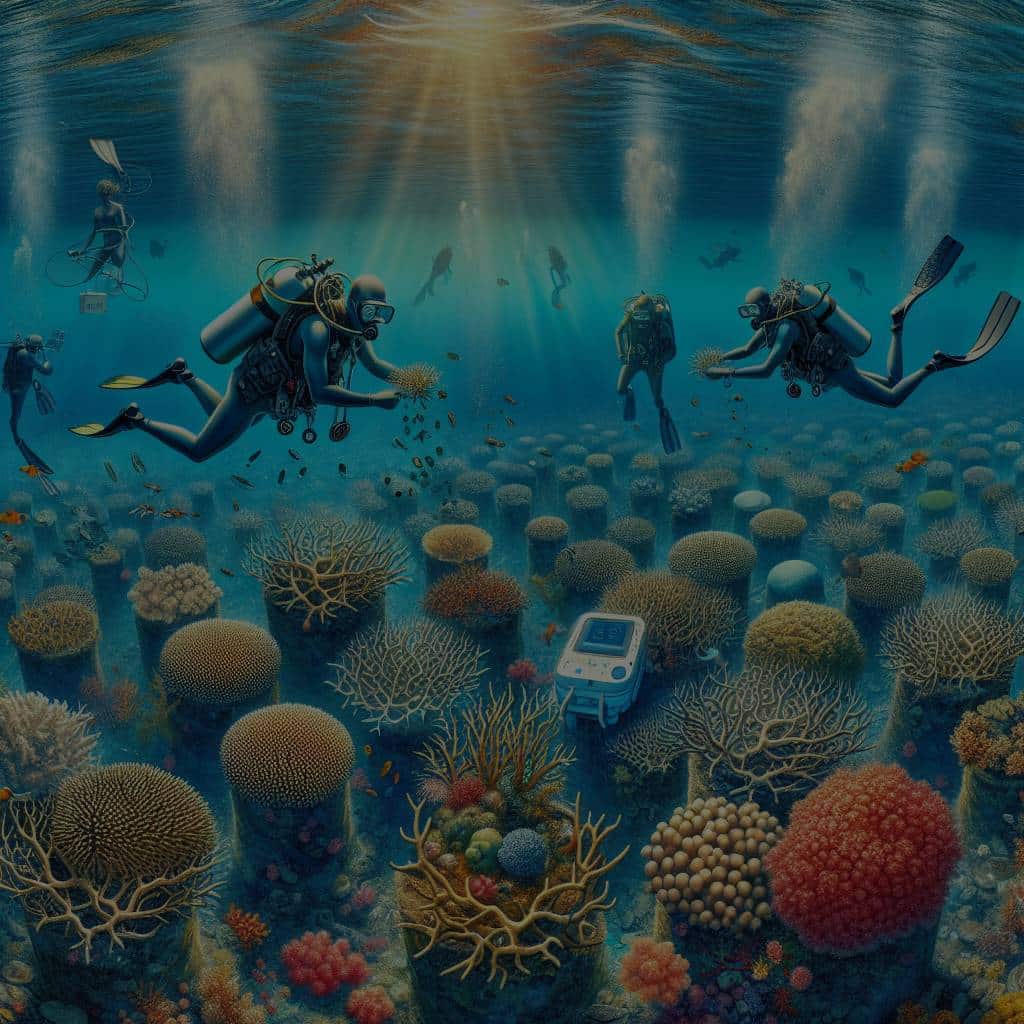What Are the Latest Techniques in Coral Reef Restoration for Marine Conservation?

Coral reefs, often referred to as the "rainforests of the sea," are some of the most diverse and valuable ecosystems on Earth. They provide shelter, food, and breeding grounds for countless marine species, protect coastal areas from storm damage, and support the livelihoods of millions of people. However, these underwater ecosystems are increasingly under threat from climate change, human activities, and other stressors.
Despite these challenges, there are numerous conservation efforts underway to restore damaged reef areas and ensure the survival of these critical habitats. Let’s delve into the latest techniques and projects in coral reef restoration for marine conservation, with a particular focus on innovative approaches that are being employed in areas such as Florida, an area renowned for its extensive coral reefs.
In parallel : Can Phytoremediation Techniques Clean Up UK’s Contaminated Industrial Sites?
Understanding Coral Reefs
Before we explore the methods of reef restoration, it’s essential to understand what coral reefs are and why they’re so crucial in marine ecosystems.
Coral reefs are underwater structures made from coral polyps, tiny, soft-bodied organisms related to sea anemones and jellyfish. These polyps cluster in groups, and over time, the colonies they form create the framework of the reef. Reefs are hotspots of biodiversity, often hosting a vast range of other marine species.
In parallel : How Can Smart Assistants Improve Accessibility for Disabled Individuals in the UK?
The health and survival of coral reefs are vital for the overall well-being of our oceans. They buffer adjacent shorelines from wave action and prevent erosion, property damage, and loss of life. Moreover, they provide habitats and shelter for many marine organisms. However, human activities and changes in the climate are posing severe threats to reefs worldwide.
Techniques in Coral Reef Restoration
The focus on coral reef restoration has given rise to an array of innovative techniques designed to aid in the recovery of these vital ecosystems.
Coral Gardening
One of the most popular methods is coral gardening. This technique involves growing corals in nurseries and then transplanting them to damaged areas of the reef. It’s a technique that’s been successful in many regions, including Florida, where various projects are underway.
In the nursery, coral fragments – small pieces of coral that have broken off naturally or have been artificially fragmented – are attached to underwater structures that mimic the natural growing conditions of a reef. Once they have grown sufficiently, they’re transplanted to the reef.
Coral Spawning
Coral spawning is another remarkable technique for coral reef restoration. This process involves capturing gametes (eggs and sperm) during a coral’s mass spawning events, then rearing the larvae in labs and outplanting them on the reef. By doing this, scientists can significantly increase the survival and growth rates of these young corals.
Assisted Evolution
The technique of assisted evolution, meanwhile, involves the selection and breeding of corals and their symbiotic algae to enhance their stress tolerance. By doing so, these genetically modified corals are more likely to survive in warmer, more acidic oceans.
3D Printing Coral Reefs
3D printing is a promising new technique in the realm of coral reef restoration. Scientists create artificial coral reefs using 3D printing technology, designed to mimic the complex structures of natural reefs. These structures can then be installed in damaged or degraded reef areas, offering a substrate for coral larvae to settle and grow.
Conservation Projects Around the World
There are various coral reef restoration projects around the world, each using a combination of the techniques above and tailored to the specific needs and conditions of their location.
One of these is the Florida Reef Tract project, one of the most extensive efforts in the world to restore a reef system. This project involves the collection and nursery rearing of ten different species of coral, which are then outplanted to areas of the reef that have suffered damage.
Another noteworthy project is the Mote Marine Laboratory’s Coral Restoration Program. This program combines coral gardening and 3D printing techniques to restore the reefs in the Florida Keys.
The Importance of Continued Research and Development
While these techniques and projects are undoubtedly making a significant difference, the challenges facing coral reefs are extensive and complex. Continued research and development are crucial to refine current methods and develop new ones.
In the face of climate change, innovations in reef restoration techniques must also consider the long-term adaptability of corals. For instance, creating heat-resistant corals may become a crucial survival strategy as the world’s oceans continue to warm.
Overall, coral reef restoration is an exciting and rapidly evolving field. It’s a critical element in the wider marine conservation effort, and with the continued application of innovative techniques, there’s hope for the future of our world’s precious coral reefs.
Emerging Challenges and Future Directions
The journey towards effective coral reef restoration is not without its hurdles. The escalating impacts of climate change, including warmer seawater temperatures, ocean acidification, and heightened storm intensity, pose significant threats to the survival and prosperity of coral reefs. Increased human activities, including overfishing, coastal development, and pollution, also exert unprecedented pressure on these fragile ecosystems.
The most immediate threat to coral reefs is coral bleaching. This phenomenon occurs when corals, stressed by changes in conditions such as temperature, light, or nutrients, expel the symbiotic algae living in their tissues, causing them to turn completely white. Without these algae, the coral loses its primary source of food, making it more susceptible to disease and other forms of stress.
Besides, the long-term effectiveness of restoration efforts remains uncertain due to potential drawbacks of some techniques. For instance, coral gardening risks drawing resources away from existing healthy coral populations and may inadvertently spread disease. Artificial reefs may not fully replicate the complex structures and functions of natural reefs, thereby limiting their utility as a restoration tool.
Future efforts in coral restoration should thus prioritize both the restoration of existing coral communities and the creation of resilient, future-proof reefs capable of withstanding the pressures of a changing climate. This endeavor calls for novel, scalable, and cost-effective solutions to boost the resilience of reefs and their communities.
Conclusion: Saving the Rainforests of the Sea
In the face of the mounting threats to marine biodiversity, the task of restoring and preserving coral reefs worldwide is both urgent and critical. While the challenges are immense, the determination and ingenuity of scientists, conservationists, and communities are proving equal to the task.
The innovative techniques currently employed in reef restoration – from coral gardening and coral spawning to assisted evolution and 3D printing of artificial reefs – are all invaluable tools in this struggle. These methods are continuously being refined and expanded to address the emergent challenges posed by climate change and human activity.
Restoration projects like the Florida Reef Tract project and Mote Marine Laboratory’s Coral Restoration Program are not just vital lifelines for the reefs they serve, but also act as powerful examples of what can be achieved with concerted effort and dedication.
However, these projects and techniques are not standalone solutions. They must be complemented by robust global action to mitigate climate change, responsible ocean stewardship, and ongoing public education. Ultimately, the survival of coral reefs will depend on our collective will and ability to safeguard these precious ecosystems for future generations.
Our coral reefs are far more than just beautiful underwater landscapes. They are the lifeblood of our oceans, supporting an incredible array of marine life and providing countless benefits to humanity. The mission to protect and restore these rainforests of the sea is a testament to our dedication to the preservation of the Earth’s biodiversity and our commitment to a sustainable future. Let us continue to invest in and innovate for the future of our world’s invaluable coral reefs.
